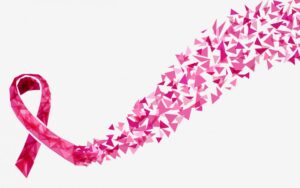What you Should Know About Breast Cancer Screening

Laci Burk, FNP-BC Sandpoint Women’s Health
During the month of October, National Breast Cancer Awareness Month, many women question if they should be getting annual mammograms. Several controversial articles have been in the news lately about the pros and cons of annual breast cancer screenings, and if mammograms are even safe.
The most important thing for women (and men) is to know their family and personal health history and to be proactive in their healthcare. Women who have a family history of even one family member testing positive for the BRCA genes, or having breast cancer, ovarian cancer, and even peritoneal (lining of the abdominal cavity) cancer has an increased risk of developing breast cancer. The risk of developing breast cancer also increases for anyone who had radiation of their chest between the ages of 10 and 30. Women with any of the mentioned risk factors should start having mammograms no later than age 40, possibly sooner, and should talk to their healthcare provider for their recommendation based on their individual risks.
Women who do not have any contributing risk factors are considered to be at average risk for developing breast cancer, which is a 12.4% risk over their lifetime. These women should consider starting to get mammograms no later than age 45, as recommended by the American Cancer Society, and should continue to have yearly mammograms until age 55. After age 55, women can talk to their healthcare providers about their individual risk factors and at this time possibly start having mammograms every other year.
One misconception people often have is that mammograms are unsafe due to radiation exposure, and they feel the radiation itself can cause cancer. The radiation exposure in a mammogram is less than in a traditional x-ray. People are exposed to radiation every day in their natural surroundings. The radiation exposure from a mammogram is about 13% of the radiation an average person is naturally exposed to over one year. Studies show the benefits of yearly mammograms for women starting at age 40 are much better than the risks of having mammograms because often times when breast cancer is discovered from other screening methods it is at an advanced stage.
3-D Mammography is the latest technology available in breast cancer screening, and it is available in the Sandpoint area only at Bonner General Health’s Imaging Center.
Advantages of 3-D Mammography over 2-D Mammography:
- Detects 40% more invasive cancers than 2-D mammography
- Exams use virtually the same radiation dose as 2-D mammography
- Images are taken from different angles than a traditional 2-D mammogram allowing doctors to examine breast tissue one layer at a time
- Is proven to be the most superior screening for breast cancer
- Results in up to 40% fewer callbacks for rescreening.
The most important thing to remember is to be proactive in your own healthcare. Monthly self-breast exams are still recommended, and if you notice any changes in either breast, it is more important to see your healthcare provider for evaluation than think to yourself, “I don’t have the typical risk factors”, because more and more newly diagnosed breast cancer patients have no risk factors.
American Cancer Society. https://www.cancer.org/. 2017.
Screening for breast cancer: Strategies and recommendations. Up to Date. 2017.
Article Submission for Sandpoint Living Local Magazine, October 2020.
